タングステンカーバイドブッシング are widely used in industrial applications for their exceptional 耐摩耗性, 硬度, and durability. However, even the toughest materials can experience premature failure if not properly maintained.
One of the most important factors that influence the lifespan of tungsten carbide bushings is lubrication. Proper lubrication reduces friction, prevents wear, and ensures that the bushing operates at optimal performance levels.
In this blog, we will discuss how lubrication affects the life of tungsten carbide bushings, the importance of selecting the right lubricant, and best practices to extend the lifespan of these critical components.
The Role of Lubrication in Reducing Friction
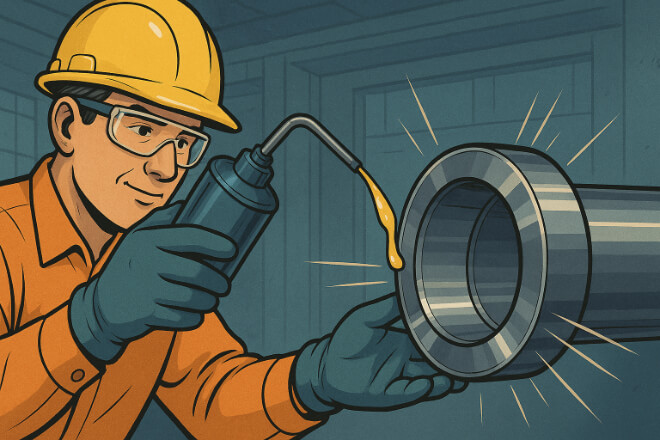
Lubrication plays a crucial role in reducing friction between the tungsten carbide bushing and its mating components, such as the shaft or housing.
Friction, if not controlled, can lead to increased heat, wear, and material degradation. Here’s how lubrication helps:
1). How Lubrication Reduces Friction:
Lubricant Film: Lubricants form a thin film between the bushing and the mating part, preventing direct metal-to-metal contact. This film reduces friction and allows the components to move more smoothly.
Lower Heat Generation: Less friction means less heat generation. Heat can cause materials to degrade, so by reducing friction, lubrication helps maintain the structural integrity of the bushing.
Smoother Operation: Lubrication ensures smooth movement of the bushing, which is especially important in high-speed and high-load applications where friction can be a major factor.
2). Effect of Insufficient Lubrication:
Excessive Wear: Lack of lubrication increases friction, which accelerates the wear of both the bushing and the mating parts.
Overheating: Without lubrication, friction leads to overheating, which can cause the bushing material to degrade, resulting in premature failure.
Types of Lubricants for Tungsten Carbide Bushings
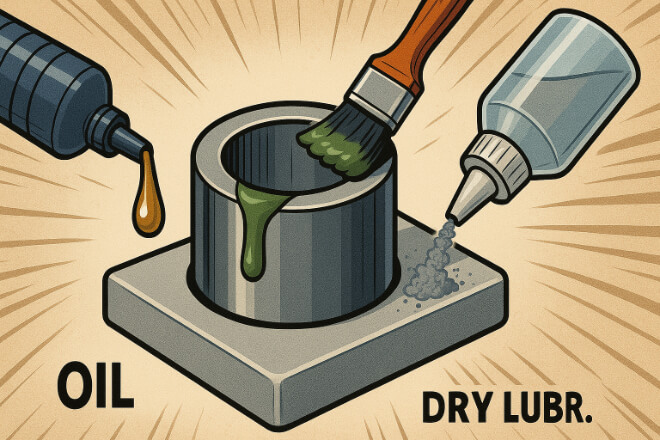
Choosing the right lubricant for tungsten carbide bushings is critical for ensuring their longevity.
Different applications require different types of lubricants. Here are the most common types:
1). Oil-Based Lubricants
Oil-based lubricants are commonly used in applications that require continuous lubrication, such as in high-speed machinery.
These lubricants are ideal for reducing friction and preventing wear in dynamic environments.
Advantages: Provides continuous lubrication, reduces friction, and disperses heat.
Use Cases: High-speed rotating machinery, pumps, and engines.
2). Grease-Based Lubricants
Grease-based lubricants are thicker than oil-based lubricants and are commonly used in applications where continuous lubrication is not possible.
Grease stays in place longer and is useful for preventing wear in slow-moving or heavily-loaded applications.
Advantages: Provides long-lasting lubrication, stays in place, and prevents rust and corrosion.
Use Cases: Heavy-duty applications, high-load conditions, and environments where oil might leak.
3). Dry Lubricants
Dry lubricants, such as graphite or molybdenum disulfide, are used in situations where oil or grease cannot be used, such as in high-temperature or cleanroom environments.
These lubricants form a thin layer that reduces friction without the need for a liquid.
Advantages: Ideal for high-temperature environments, low-mess, and no risk of contamination.
Use Cases: Extreme temperatures, vacuum environments, or where contamination is a concern.
The Importance of Proper Lubrication in Different Operating Conditions
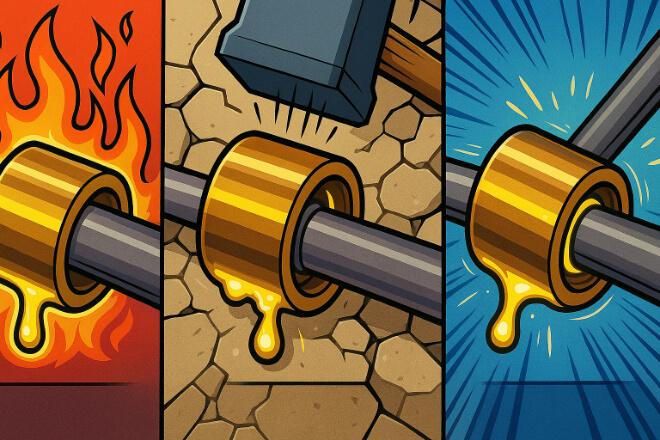
The operating conditions of the system play a major role in determining the type and frequency of lubrication required for tungsten carbide bushings.
Factors like temperature, load, and speed can affect how lubricants perform.
1). High-Temperature Environments
In high-temperature environments, the viscosity of lubricants can change, reducing their effectiveness.
It’s important to use lubricants that can withstand elevated temperatures without breaking down.
Solution: Use high-temperature-resistant lubricants, such as synthetic oils or dry lubricants, that can perform under extreme conditions without degrading.
2). Heavy Loads
Under heavy loads, the bushing experiences greater stress, which can increase friction and wear.
Proper lubrication ensures that the bushing can handle these loads without excessive wear or damage.
Solution: Grease-based lubricants or high-viscosity oils are ideal for high-load conditions, as they provide a thicker barrier against wear and friction.
3). High-Speed Applications
In high-speed applications, the bushing experiences increased friction due to rapid movement.
Lubrication in these environments helps minimize the heat generated by friction and ensures smooth operation.
Solution: Oil-based lubricants, such as synthetic oils, are best for high-speed applications, as they flow more easily and provide continuous lubrication.
Best Practices for Lubricating Tungsten Carbide Bushings
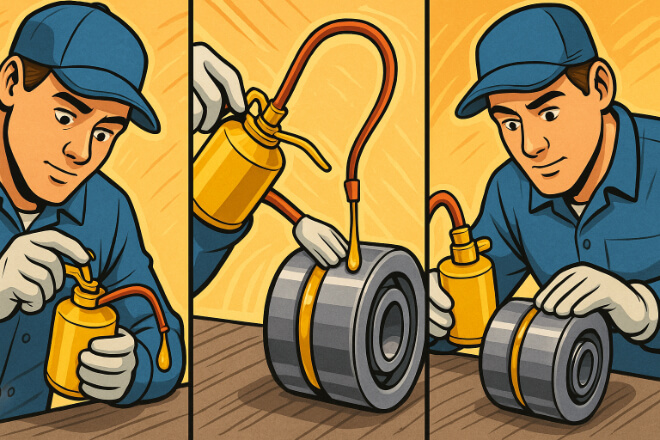
Proper lubrication is not just about choosing the right lubricant; it’s also about how and when to apply it. Here are some best practices to extend the life of tungsten carbide bushings:
1). Regular Lubrication Intervals
Establish a regular schedule for lubrication, especially in heavy-duty or high-speed applications.
This ensures that the lubricant does not wear out or degrade before it is reapplied.
Tip: Set reminders or automated lubrication systems to ensure lubrication is applied at the right intervals.
2). Use the Correct Amount of Lubricant
Using too much or too little lubricant can have negative effects. Excess lubricant can attract dirt and debris, while insufficient lubricant increases friction.
Tip: Follow manufacturer recommendations for the correct amount of lubricant based on the application.
3). Monitor Lubricant Quality
The quality of the lubricant should be monitored regularly. Over time, lubricants can degrade or become contaminated with particles that reduce their effectiveness.
Tip: Check the lubricant regularly for contamination, and replace it when necessary to ensure optimal performance.
4). Avoid Cross-Contamination
When switching between different types of lubricants (e.g., oil to grease), ensure that the old lubricant is fully removed.
Mixing incompatible lubricants can lead to poor lubrication and damage to the bushing.
Tip: Clean the components thoroughly before changing the type of lubricant.
The Consequences of Inadequate Lubrication
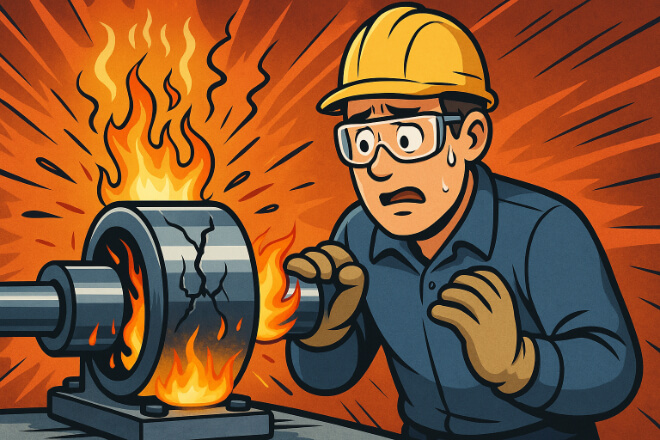
Failing to properly lubricate tungsten carbide bushings can lead to several issues that reduce their effectiveness and lifespan:
1). Increased Wear and Tear
Without proper lubrication, the bushing will experience excessive friction, leading to rapid wear and tear on both the bushing and the shaft.
2). Overheating
Excess friction generates heat, and without adequate lubrication, the bushing may overheat, causing the material to degrade or warp.
3). Early Failure
Premature wear, overheating, and material degradation can all lead to early bushing failure. This can result in costly downtime and repairs.
Lubricants for Tungsten Carbide Bushings
| Lubricant Type | 最適な用途 | 利点 |
|---|---|---|
| Oil-Based Lubricants | High-speed applications | Reduces friction, continuous lubrication |
| Grease-Based Lubricants | High-load applications | Long-lasting, stays in place |
| Dry Lubricants | High-temperature or cleanroom environments | No mess, works in extreme conditions |
結論
Lubrication is essential for maximizing the lifespan and performance of tungsten carbide bushings.
By reducing friction, preventing wear, and ensuring smooth operation, proper lubrication ensures that these critical components function effectively for longer periods.
Selecting the right lubricant for the operating conditions, applying it regularly, and maintaining it properly are key to avoiding premature wear and failure in tungsten carbide bushing systems.
企業の詳細を知りたい場合は、お気軽にお問い合わせください。 お問い合わせ。
